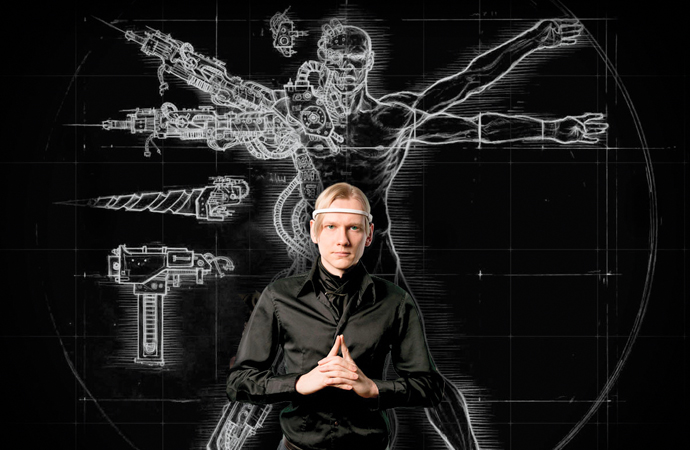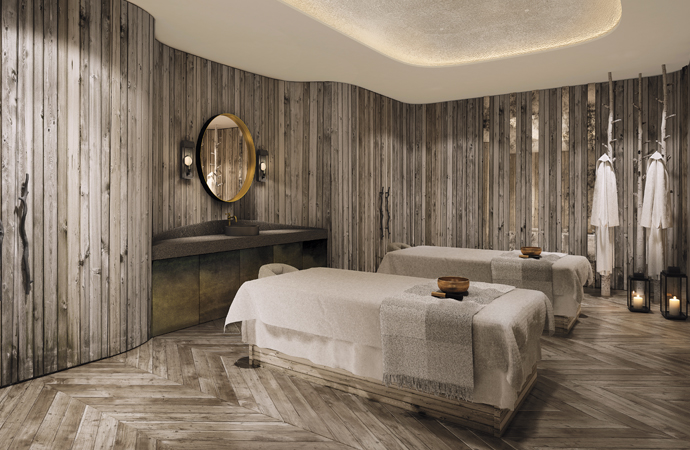Biohacking: Behind the Quasi-Scientific Wellness Movement
The most ardent devotees insist that it will one day allow humans to cheat death
by Chris Wright
May 25, 2023

Illustration / Antonio Sortino
Until fairly recently, it was not considered good business for a hotel to promise to freeze its guests half to death, or for restaurants to encourage diners to eat like troglodytes. As for a spa whose listed treatments include lymphatic drainage and (ahem) “venom”—well, whatever happened to a good old-fashioned shiatsu? It seems inevitable that more and more hospitality providers will lavish their guests with similarly alarming services in the coming years—in-room cryotherapy chambers, say, or coffee laced with cognition-enhancing nootropics—and for this we can thank biohacking.
A sweeping, quasi-scientific wellness movement that incorporates everything from blood transfusions and mechanical limbs to getting a good night’s sleep, biohacking is mainly defined by its do-it-yourself ethos, and the shared belief that biological tinkering can introduce positive, permanent changes in a person. The movement’s most ardent devotees insist that it will one day allow humans to cheat death.
Finnish thinker Teemu Arina, co-author of the influential Biohacker’s Handbook, takes a more measured approach. “I define biohacking as better living through science, technology and nature,” he says. “People don’t really want to live forever. What people want is more healthy years in their lives. It’s not about life span but health span.”

Author and biohacking expert Teemu Arina / Photo: Courtesy of Teemu Arina
Arina and other experts recently hosted a Biohacker’s Retreat in Estonia, aimed at people interested in creating souped-up versions of themselves. But this three-day jamboree of guided yoga, ice baths and nutrigenomic dining wasn’t the only biohacking-focused getaway on offer.
The newly opened Six Senses Crans-Montana hotel, in Crans-Montana, Switzerland, comes equipped with a Biohack Recovery Lounge (purveyor of the treatments listed earlier). “There are no invasive treatments such as gene editing or inserting microchips under the skin,” a hotel representative assures us. “For us, the term ‘biohacking’ is a shortcut that can help change our bodies and our brains, enabling a smarter, fitter and longer health span.”
There’s no such moderation at the London-based LMS Wellness, an invitation-only spa that goes all in on the high-tech approach to biohacking: Its array of glossy equipment includes a neurofeedback pod, a hyperbaric chamber and an infrared sauna. In Finland, meanwhile, biohacker chef Sami Tallberg operates at the opposite end of the techno scale. At his two restaurants (a third is set to open this month), Tallberg presents “wild food” dishes, whose ingredients tend to include things like rare-bred chicken and cold-pressed hemp juice. He also runs foraging excursions and cookery classes for people who want to give it a go themselves.
There is more to all this than getting a bit of local color, however. Tallberg belongs to a biohacking branch whose beliefs are centered on the idea that humans have become coddled to the point where we are no longer able to function properly, and so advocate a more primitive lifestyle. In terms of nutrition, biohackers would encourage us to eat, say, freshly plucked nettles rather than supermarket lettuce. Part of the reason for this, the argument goes, is that by ingesting the chemicals wild plants develop to protect them from insects and disease, we become similarly resistant.

Treatment room at Six Senses Crans-Montana, Switzerland
For Arina, whose latest book is titled The Resilient Being, the strength-through-struggle principle applies to people as well as plants—hence the popularity of treatments such as cryotherapy among biohackers. “Humans sit indoors with the temperature at exactly 75 degrees,” he says. “But extreme temperatures have been used for centuries as a treatment. When cells are exposed to extreme heat or cold, it activates a repair mechanism that maintains the integrity of cells under threat. If the stress goes on for too long, the cell will die, but in smaller amounts it makes it stronger. It also releases awesome feel-good hormones.”
Hunger, too, is viewed as a form of positive stress. “We always have food when we want it, but our ancestors felt the metabolic benefits of being food-deprived,” Arina says. “If no food is available, the first thing the body does is look for other forms of energy, and part of that involves killing nonfunctioning or damaged cells. Fasting leads to a state where the body starts performing maintenance on itself.”
The question now, though, is where do we draw the line? Hotel guests might be okay with a spot of red-light therapy in the spa, but would they tolerate a food-free menu in the restaurant? Probably not.




